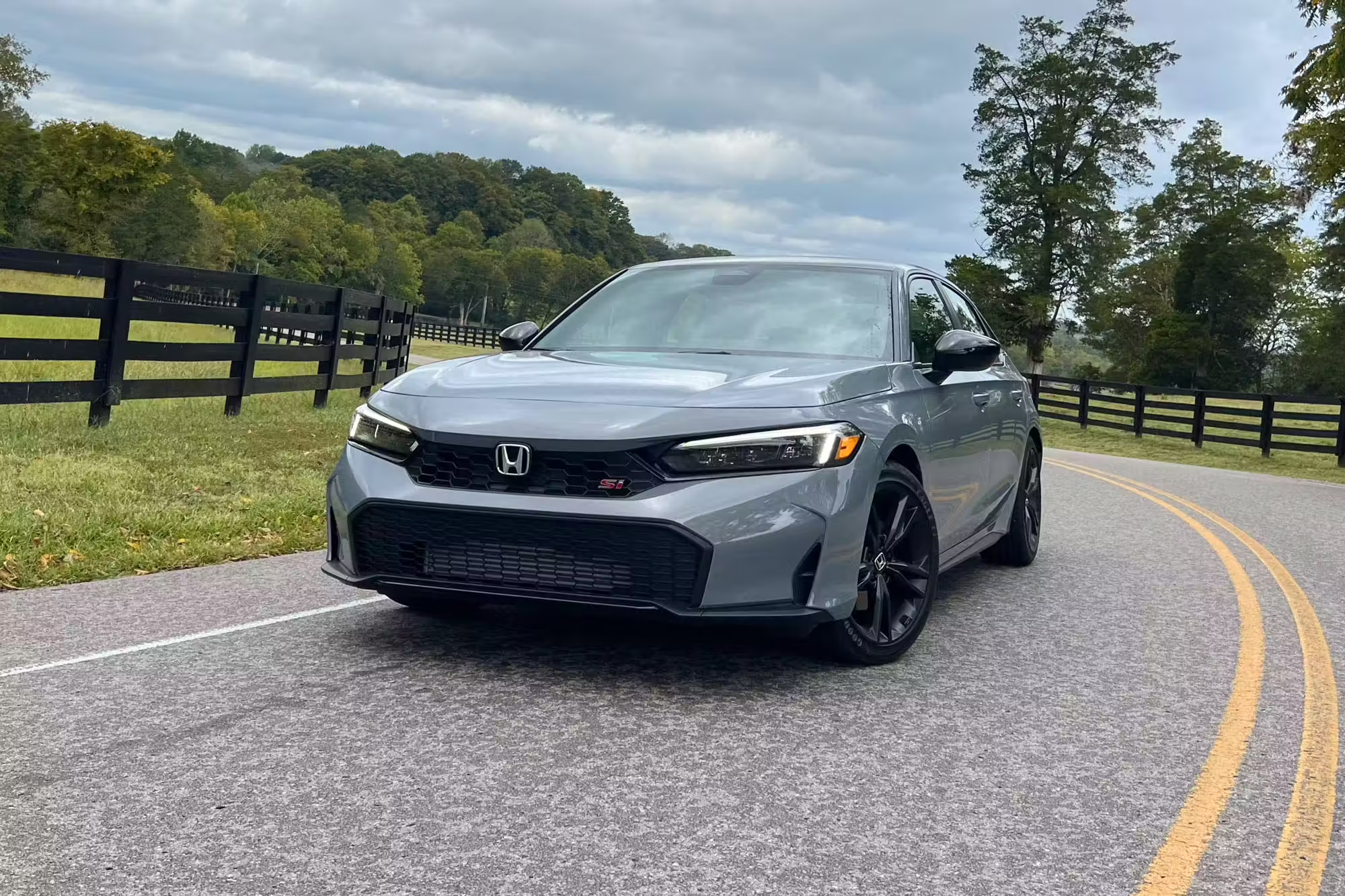In the ever-evolving world of automotive buying and selling, the used car market presents a fascinating study of supply, demand, and consumer psychology. Unlike new car sales, where the latest models are fresh off the assembly line and often backed by lengthy warranties and incentives, the used car market is shaped by a complex mix of factors.
These include vehicle reliability, brand reputation, styling, historical performance, ownership costs, and even cultural appeal. As a result, some used cars generate enormous interest and long buyer waitlists, while others languish on dealership lots and classified ads, barely attracting any inquiries.
Understanding why certain used cars command high demand while others are often overlooked can provide valuable insight for buyers, sellers, and enthusiasts alike. It’s more than just price or mileage; it’s about how a vehicle fits into the current lifestyle trends, its perceived value over time, and how well it meets or exceeds buyer expectations.
In fact, the disparity between highly sought-after used cars and those that go unnoticed reveals much about the shifting preferences in the automotive landscape.
This article explores two distinct sides of the used car market spectrum. On one hand, we’ll look at five used vehicles that consistently attract long buyer waitlists. These cars possess a blend of desirability factors, such as legendary reliability, iconic design, strong enthusiast communities, or standout performance, that keep demand high despite their age or mileage.
Examples include the Toyota Tacoma, renowned for its rugged durability and off-road prowess, and the Subaru WRX, which combines practicality with spirited driving excitement. Each of these cars embodies qualities that transcend their initial price tag and maintain relevance for years, if not decades, after their production.
On the other hand, we’ll delve into five used cars that rarely receive inquiries, often sitting unsold for extended periods. These vehicles might have been affordable or even innovative in their day, but issues like polarizing design, questionable reliability, underwhelming performance, or simply bad timing have left them with poor reputations.
Models like the Chrysler PT Cruiser and early Fiat 500 highlight how initial quirks or mechanical shortcomings can dampen long-term demand. Despite competitive pricing, these cars struggle to find buyers willing to take a chance, revealing how critical perception and owner satisfaction are in the used market.
By contrasting these two groups, this article sheds light on what drives used car desirability and buyer behavior. For consumers, knowing which vehicles tend to hold their value and attract interest can help in making smarter purchasing decisions, whether seeking a dependable daily driver, a project car, or a vehicle with strong resale potential. For sellers, understanding these market dynamics is equally important for pricing, marketing, and inventory management.
As the used car market continues to evolve with factors like the rise of electric vehicles, changing urban lifestyles, and technological advancements, these trends will only become more nuanced.
However, the core principles that underpin vehicle desirability remain consistent. Reliability, cultural appeal, practicality, and emotional connection are timeless factors that continue to separate used cars that fly off the lot from those that barely get a second glance.
In this deep dive, we’ll uncover what makes some used cars highly sought after and others largely ignored. Whether you’re a seasoned car buyer, a casual observer, or simply curious about automotive trends, this comparison will provide a clearer picture of how vehicles age in the market and what buyers want when hunting for a used car.
Also Read: 5 Trucks That Shut Down When Stolen and 5 That Can Be Driven Off in Seconds
5 Used Cars With Long Buyer Waitlists
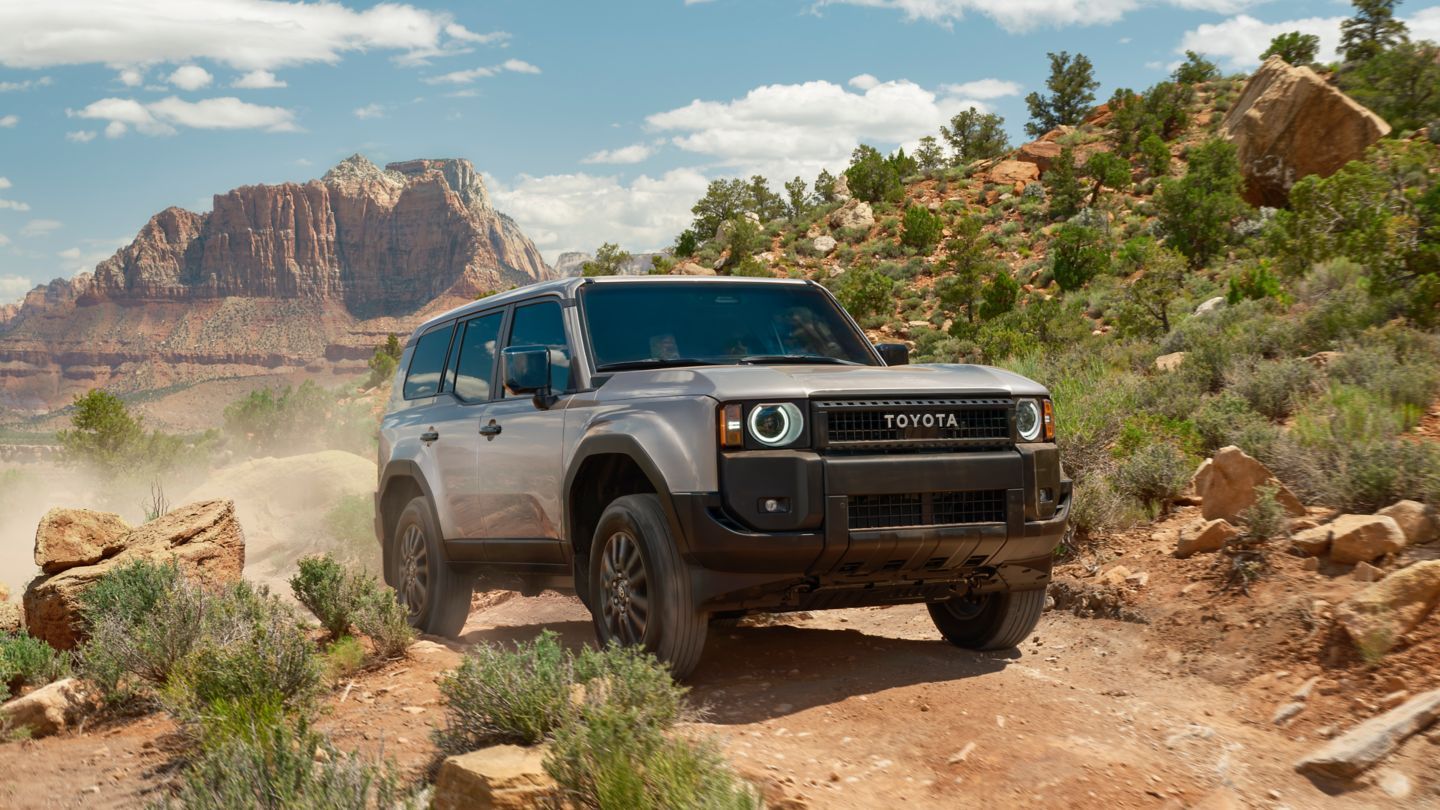
1. Toyota Land Cruiser
Few vehicles have earned the level of loyalty and admiration that the Toyota Land Cruiser enjoys. Known for its exceptional reliability, off-road capability, and durable engineering, the Land Cruiser is one of the rare vehicles that continues to hold—and often increase—its value long after its initial release.
The name alone evokes images of unbreakable performance in the harshest terrains, from the Australian Outback to the jungles of Africa. In the used market, the Land Cruiser has become a white whale of sorts, with buyers often scouring the country for well-maintained examples. Listings often disappear within days, sometimes hours, and sellers are frequently inundated with calls, offers, and even sight-unseen purchases.
A major contributor to the Land Cruiser’s cult following is its legendary build quality. This is a vehicle that was built with longevity in mind. Owners regularly report 200,000 to 300,000 miles with few serious issues, and it’s not uncommon to see older models still running strong after decades.
The V8 engines in recent U.S. models are built for endurance rather than flash, and the body-on-frame construction adds to its robustness. This overengineering is not lost on buyers, many of whom view the Land Cruiser not only as a vehicle but as an investment. The result is fierce competition in the used market, with buyers willing to pay a premium for models with verifiable service records and minimal rust.
Toyota’s decision to discontinue the Land Cruiser in the U.S. after the 2021 model year only added fuel to the demand fire. Suddenly, it wasn’t just a great vehicle—it was a limited commodity. Prices for clean used models spiked, with certain trim levels seeing resale values well above expectations.
This decision essentially transformed the Land Cruiser from a high-end niche SUV to a collector’s item. Now, even 10- to 15-year-old models are being hunted down by loyalists, off-roaders, and buyers who simply want a vehicle that they know will outlast almost anything else on the road.
Another major draw is the Land Cruiser’s unique blend of luxury and ruggedness. While its off-road prowess is unmatched in its class, it still provides a comfortable, quiet, and refined ride. The interior is laden with high-quality materials, thoughtful ergonomics, and practical features.
Unlike many modern luxury SUVs that focus primarily on aesthetics and high-tech gadgetry, the Land Cruiser is purpose-driven without being Spartan. It feels solid, planted, and timeless inside and out—qualities that used car buyers desperately seek in a world of planned obsolescence.
The global following for the Land Cruiser cannot be overstated. It has long been the vehicle of choice for humanitarian organizations, militaries, and remote explorers due to its unmatched reliability in extreme conditions. That level of real-world endorsement transcends marketing hype.
Buyers are not just interested in the Land Cruiser for what it can do—they trust it with their lives and livelihoods. In the used market, this global reputation becomes a major asset, attracting a diverse range of buyers who are often more than willing to travel long distances to secure the right model.
Finally, there’s a deep sense of community around Land Cruiser ownership. Enthusiasts form online groups, meetups, and restoration clubs to share advice, parts, and adventures. For many, buying a Land Cruiser isn’t just acquiring a vehicle—it’s joining a tribe.
This camaraderie drives further demand, as word-of-mouth and shared experiences turn casual interest into passionate pursuit. Sellers know they have a hot commodity, and buyers know exactly what they’re looking for—creating a perfect storm of high demand and short supply.
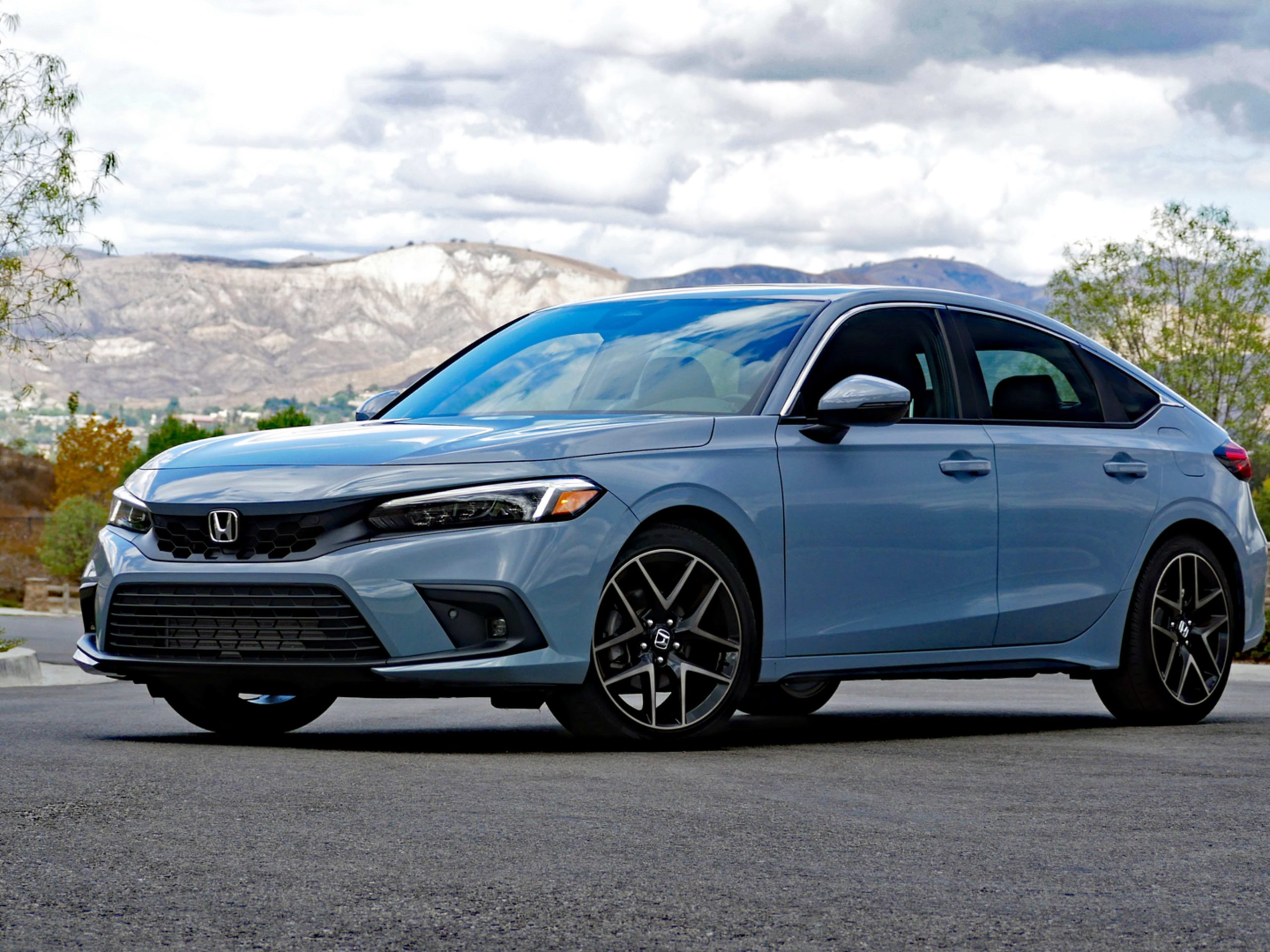
2. Honda Civic (Manual Transmission)
The Honda Civic has always enjoyed strong sales and resale value, but the manual transmission versions have become something of a legend in the used car world. These cars strike a perfect balance between simplicity, affordability, and driving engagement.
As fewer new cars are offered with manual gearboxes, the demand for older, stick-shift Civics has grown exponentially. These aren’t just cars—they’re mechanical companions that teach drivers the art of driving. For many enthusiasts, the manual Civic was their first taste of true control on the road, and it’s an experience people are now actively seeking out again.
Older models, especially from the mid-90s to early 2000s, are particularly desirable. These were peak years for Honda’s engineering reliability, with models like the Civic Si offering zippy performance without sacrificing fuel economy or dependability.
What makes these cars so enduring is that they were built with a level of mechanical honesty that’s increasingly rare in today’s automotive landscape. There’s no complicated turbo system or overwhelming suite of electronics—just a naturally aspirated engine, a lightweight chassis, and a gearbox that invites driver involvement.
Manual Civics are also incredibly customizable, which feeds into their popularity among tuners and modifiers. The aftermarket support is vast, meaning parts are plentiful, and custom builds are only limited by a buyer’s imagination. However, the Civics that fetch the highest prices and longest waitlists are often those that remain stock or have only light modifications. These are becoming rare as the years go by, so when one does pop up for sale, especially with low miles and a clean title, it can trigger a wave of offers.
Fuel efficiency is another factor that keeps these cars on buyer waitlists. At a time when gas prices are volatile and hybrid vehicles are still relatively expensive, a well-maintained manual Civic offers a perfect compromise. It’s economical, easy to maintain, and reliable in almost any weather. Even urban commuters are now seeing the value in buying a lightweight, easy-to-park car that gets 35–40 mpg without relying on complex hybrid technology.
There’s also a strong sense of nostalgia at play. Millennials and Gen Z buyers often grew up with family members who drove these cars, or they played with them in racing video games. Now, as adults, they seek out these vehicles not only for practical reasons but also to recapture a sense of youthful enthusiasm. The Civic is an emotional buy as much as it is a rational one. Its history and presence in popular culture only elevate its status on the used car waitlists.
Finally, the simplicity and low cost of ownership are unbeatable. These cars are cheap to insure, easy to repair, and forgiving for new drivers. In an age of digital everything, owning a Civic with a manual transmission is a refreshing return to analog joy.
It teaches mechanical sympathy and engagement in ways no automatic crossover ever could. For these reasons, it’s no surprise that certain manual Civics have developed their mini-fan bases, and are nearly impossible to buy without being second in line.

3. Tesla Model 3 (Early Years)
The Tesla Model 3 may be a relatively recent addition to the automotive landscape, but its impact has been seismic. When it was released, it marked a turning point in the mass adoption of electric vehicles (EVs), offering a sleek, tech-forward, and high-performance car at a price point within reach of many middle-class buyers.
Today, early-year Model 3s are among the most searched-for vehicles on used car platforms. Buyers flock to them for a mix of innovation, efficiency, and long-term value. Because Tesla does not flood the used car market with certified pre-owned vehicles, demand far outweighs supply, leading to waitlists and rapid sales for well-kept examples.
One of the key reasons for this enduring demand is Tesla’s unique business model. Most vehicle features are software-based, which means that early adopters who purchased expensive options like Full Self-Driving (FSD) can pass that value along to the next buyer.
FSD alone adds thousands of dollars in functionality, and in many cases, it stays with the vehicle after resale. This creates a scenario where a used Model 3 with FSD is far more attractive than buying a new one and paying for the same features all over again. Buyers specifically seek out these vehicles, making them hot commodities in the secondhand market.
Reliability is also a surprisingly strong factor. While Teslas have had their share of quality control issues, the core powertrain—battery and motors—tends to be remarkably robust. Without the need for oil changes, timing belts, or transmission repairs, long-term ownership becomes simpler.
The regenerative braking system also reduces wear on traditional brake components. As EV knowledge spreads and buyers become more educated, the idea of purchasing a used Tesla becomes less intimidating and more of a smart, future-proof choice.
The software updates are another game changer. Tesla continues to improve vehicle performance, range, and features long after the initial sale via over-the-air (OTA) updates. This gives even older Model 3s a sense of freshness and technological relevance that no other automaker currently offers. Buyers are essentially purchasing a car that improves over time—a concept that deeply appeals to tech-savvy consumers. For many, that’s worth being on a waitlist or paying slightly over book value.
There’s also an exclusivity factor at play. Despite growing production numbers, not every region has easy access to used Teslas. In areas with fewer EV dealerships or limited public chargers, a clean used Model 3 can become a hot ticket. Buyers sometimes travel across state lines or even pay transportation fees just to secure one. The fact that Tesla’s direct-sales model limits used inventory to private sellers only increases the competition for well-maintained cars.
Lastly, early Model 3s have become something of a tech icon. They represent the shift from gas to electric, from analog to digital. For many buyers, owning one isn’t just about saving money on fuel—it’s about participating in the future. This makes the used Model 3 not only a pleasure to own but also a symbol of progress and innovation.
This aura of cutting-edge technology combined with strong resale value ensures that early Tesla Model 3s consistently attract long buyer waitlists, often selling faster than many conventional used vehicles.
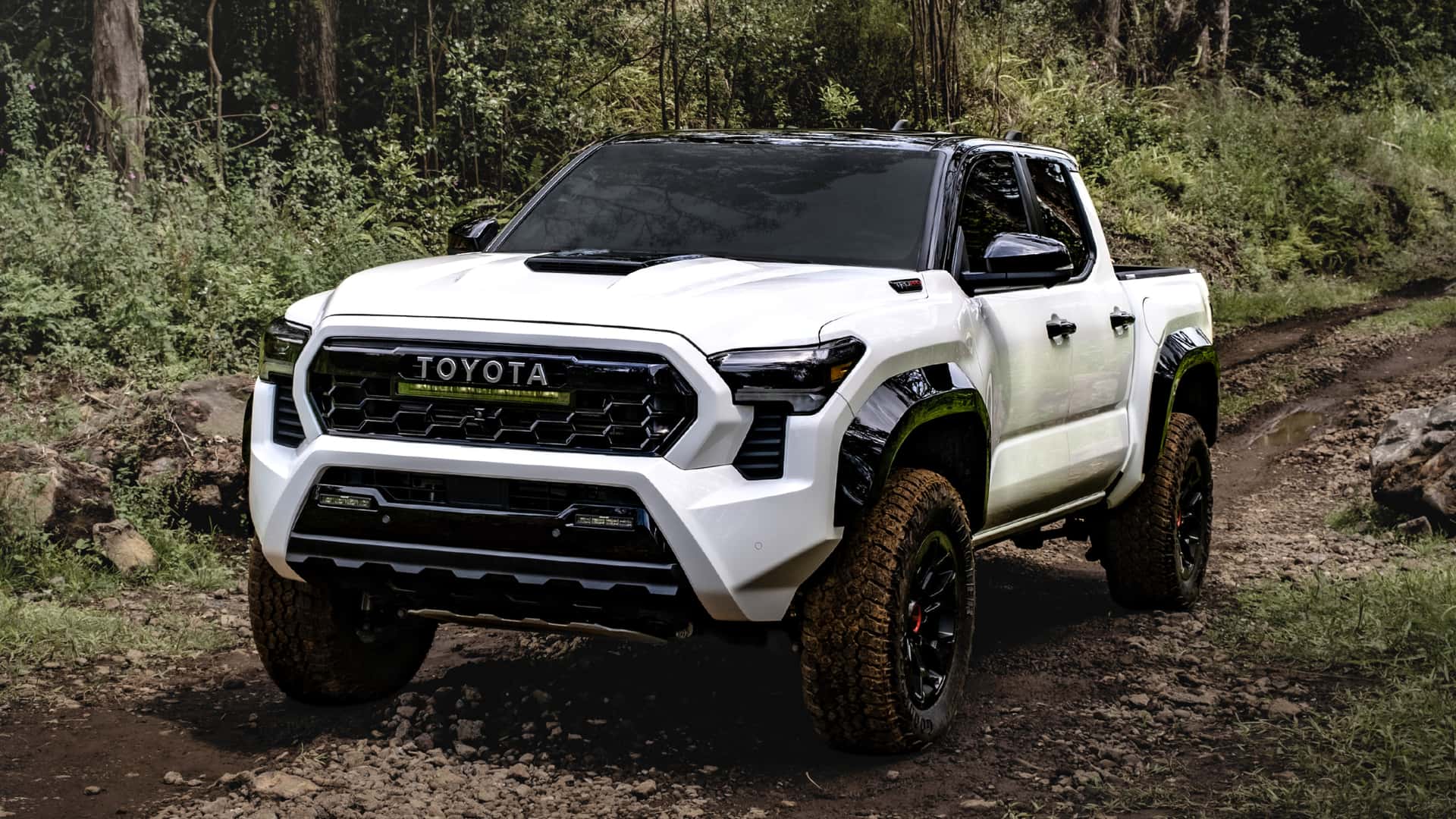
4. Toyota Tacoma
The Toyota Tacoma is widely recognized as the king of midsize pickup trucks, especially in the used vehicle market. Its reputation for bulletproof reliability, off-road capability, and strong resale value has made it an enduring favorite among truck buyers.
Unlike many trucks that lose value quickly, Tacomas often defy depreciation norms, sometimes retaining or even increasing in value several years post-purchase. This strong market demand leads to long waitlists for used Tacomas, especially in popular trims like the TRD Off-Road and TRD Pro. It’s common for dealers and private sellers to receive multiple inquiries on well-maintained trucks the moment they become available.
One factor that drives the Tacoma’s desirability is its impressive blend of utility and everyday drivability. While many midsize trucks focus heavily on hauling or work capabilities, the Tacoma balances rugged off-road performance with a comfortable ride and respectable fuel economy.
Buyers appreciate this versatility, especially those who want a reliable truck for both weekend adventures and daily commutes. The Tacoma’s reputation for holding up well under hard use and rough terrain further enhances its appeal to outdoor enthusiasts, contractors, and those living in rural areas.
Toyota’s long-standing commitment to quality and durability plays a huge role in the Tacoma’s used car desirability. These trucks are known to last well beyond 200,000 miles with basic maintenance, making them a safe bet for used buyers looking for longevity.
Even older models with high mileage often find multiple interested buyers because the Tacoma’s mechanical components are proven and simple to repair. Toyota’s widespread dealer network also makes maintenance convenient and affordable, adding to the truck’s overall value proposition.
The Tacoma market is further bolstered by a strong enthusiast community. Owners form clubs, participate in off-road events, and share modification tips online, reinforcing the truck’s cultural status.
Many buyers seek out trucks that have been lightly modified with accessories such as lift kits, all-terrain tires, or upgraded bumpers, which can add to the vehicle’s desirability and resale price. Because of this passion-driven demand, used Tacomas rarely linger on the market, and waiting lists form quickly when a clean, well-kept model appears.
Moreover, scarcity plays a part. Toyota strictly controls Tacoma production and allocates many new units to corporate fleets and rental companies, which means fewer are available for private sale. As the new trucks fly off dealer lots, used Tacomas become a go-to option for buyers who don’t want to wait months for a new truck.
The limited supply of clean used models combined with high demand from loyal Toyota fans, first-time truck buyers, and adventurers ensures that the Tacoma maintains its position as one of the most sought-after used vehicles on the market.
Finally, Tacoma’s image as a tough, reliable, and no-nonsense workhorse appeals to a wide demographic. From tradespeople to weekend warriors, the truck’s reputation precedes it. It’s not just a vehicle; it’s a trusted partner that promises years of dependable service. This blend of practicality, community, and cultural cachet keeps buyer waitlists long and makes the Tacoma one of the most desirable used vehicles available.
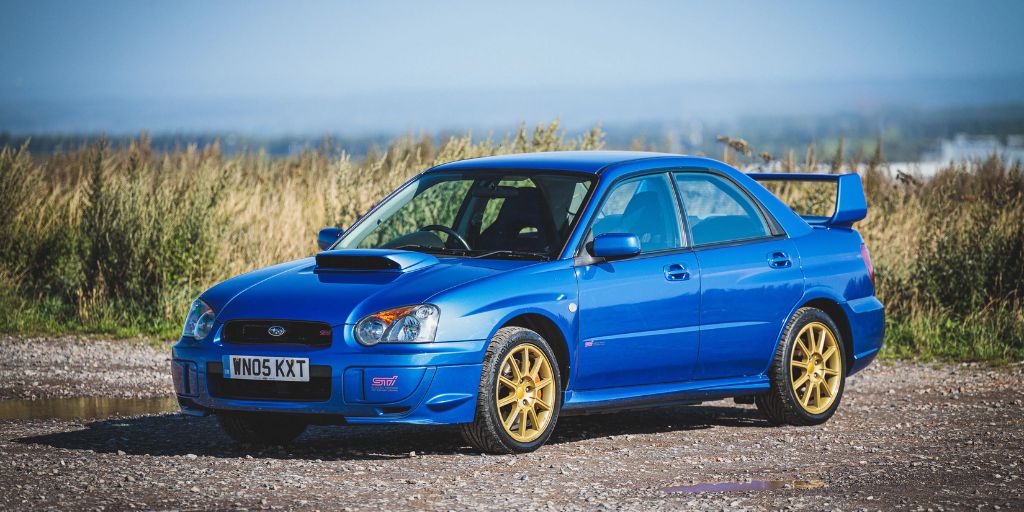
5. Subaru WRX
The Subaru WRX has carved out a unique niche in the used car market as the affordable performance sedan with rally heritage. Known for its all-wheel drive system, turbocharged engine, and engaging driving dynamics, the WRX attracts both enthusiasts and practical drivers who want sporty performance without sacrificing year-round usability.
The demand for clean used WRXs has surged in recent years, especially for models from the early 2010s when Subaru really refined the WRX formula. These vehicles often generate waitlists, with buyers willing to pay premiums for well-maintained examples with low miles.
One of the main reasons the WRX is so desirable is its combination of performance and practicality. Unlike many sporty cars that prioritize speed but falter in everyday conditions, the WRX’s symmetrical all-wheel drive makes it an excellent all-weather vehicle. Owners enjoy spirited driving on twisty roads in summer and confident traction on snow and ice in winter. This versatility broadens the car’s appeal, drawing in buyers who want a fun car that can handle diverse climates and driving environments.
The WRX’s turbocharged boxer engine delivers impressive power and a distinctive engine note, giving the car a raw and visceral feel. Unlike many modern turbocharged vehicles that feel muted or disconnected, the WRX’s setup provides direct feedback and excitement for the driver.
This analog driving experience is increasingly rare in today’s market and has helped create a loyal following. Many WRX owners become lifelong fans who upgrade to newer models or search for clean older versions as project cars.
Subaru’s reputation for safety and durability further enhances the WRX’s used market appeal. These cars typically come equipped with advanced safety features for their time and benefit from Subaru’s rigorous engineering standards. The WRX also tends to be reliable when properly maintained, with parts that are relatively easy to find and affordable to replace.
This combination of safety, reliability, and fun driving dynamics means that the WRX often draws serious buyers, some of whom form waiting lists just to secure the right example.
Finally, the WRX’s cult following contributes to its enduring demand. Online forums, enthusiast groups, and motorsport events celebrate the car’s rally roots and tunability. This passionate community not only supports aftermarket modifications but also helps maintain the WRX’s reputation and desirability in the used market.
As a result, well-preserved WRXs don’t linger on listings—they get snapped up quickly by buyers who recognize their unique value and rarity. This makes the Subaru WRX a prime example of a used car with a long and eager buyer waitlist.
5 Used Cars That Never Get Inquiries
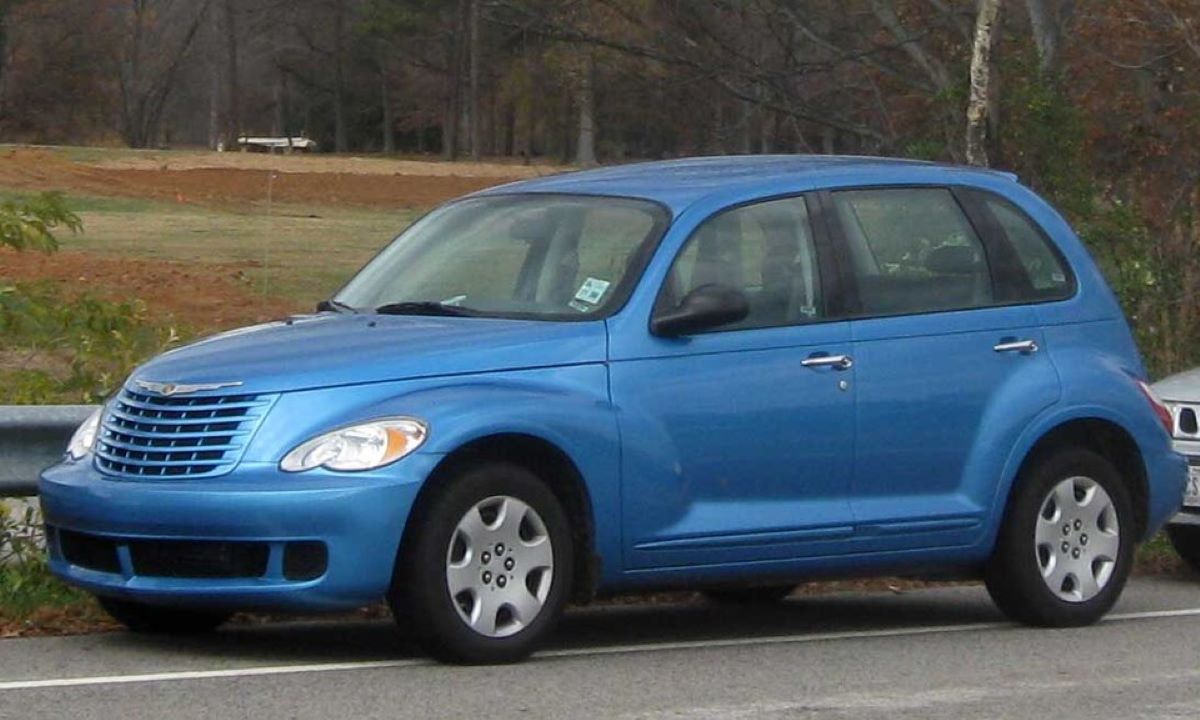
1. Chrysler PT Cruiser
The Chrysler PT Cruiser is one of the more polarizing vehicles in recent automotive history. When it debuted in the early 2000s, the PT Cruiser aimed to carve out a unique retro-styled niche. Its design was a throwback to classic American cars of the 1930s and 40s, but despite its quirky charm, the PT Cruiser never quite managed to captivate a broad audience long term.
Today, in the used car market, the PT Cruiser often sits unsold for months, sometimes years, gathering dust on dealer lots and private listings. Its lack of inquiries can be traced to several key factors that continue to plague its appeal.
Firstly, the PT Cruiser’s styling, while distinctive, is highly divisive. What some buyers find nostalgic or fun, others see as awkward or unattractive. This polarizing design has aged poorly compared to other vehicles that have timeless or sleek aesthetics.
While unique looks can sometimes create cult followings, in this case, the PT Cruiser’s retro appearance simply doesn’t resonate with most modern buyers. Instead of standing out positively, it tends to alienate potential customers, leading to a smaller pool of interested buyers.
Secondly, the PT Cruiser was never really designed to excel in any one category. Its performance, handling, and fuel economy all hover around average or below-average levels, especially when compared to modern compact cars and crossovers. Powered by underwhelming four-cylinder engines, the PT Cruiser lacks the power and refinement many buyers expect today.
Its ride quality is also compromised by a relatively tall and narrow stance, leading to less stability and comfort than competitors. This leaves it stuck in a kind of “jack-of-all-trades, master-of-none” limbo, where it doesn’t really appeal to drivers who want a fun, efficient, or practical car.
Another critical issue is reliability and maintenance. While not the worst offender in terms of mechanical problems, the PT Cruiser has developed a reputation for electrical gremlins, frequent sensor failures, and other quirky issues that can make ownership frustrating.
Replacement parts are still available, but aren’t as widely stocked or as cheap as those for more popular models. For buyers who want a no-hassle used car, this uncertainty and potential for repair costs are significant deterrents. Combined with the fact that resale values for PT Cruisers are low, few owners see the point in investing heavily in upkeep, leading to neglected cars flooding the used market.
Practicality is also lacking in the PT Cruiser. While it boasts a surprisingly spacious interior for a compact car, the cabin design feels dated and cheaply executed. Many buyers expect more modern conveniences, technology, and interior quality, especially in cars from the 2010s and beyond.
Additionally, the tall shape creates a higher center of gravity and poorer aerodynamics, which negatively affect fuel efficiency. In an era where crossovers dominate with efficient, spacious, and modern interiors, the PT Cruiser just doesn’t stack up.
Culturally, the PT Cruiser failed to build a meaningful legacy. Unlike vehicles that have inspired dedicated communities or nostalgic fan bases, the PT Cruiser never generated strong emotional connections with buyers or car enthusiasts. It’s often remembered as a quirky footnote in automotive history rather than a beloved classic or even a functional used option. This lack of cultural traction means fewer repeat buyers and fewer secondhand shoppers interested in owning one today.
Finally, the supply-and-demand dynamic of the PT Cruiser is skewed heavily towards supply. Because of its low resale value and mediocre reputation, many owners hold on to their cars until they can no longer run, flooding the used market with cheap, often poorly maintained units.
This oversaturation further depresses buyer interest, making it an easy choice for bargain hunters—but a terrible choice for anyone looking for a quality used vehicle. The result? PT Cruisers frequently sit unsold, ignored, or heavily discounted for long periods.
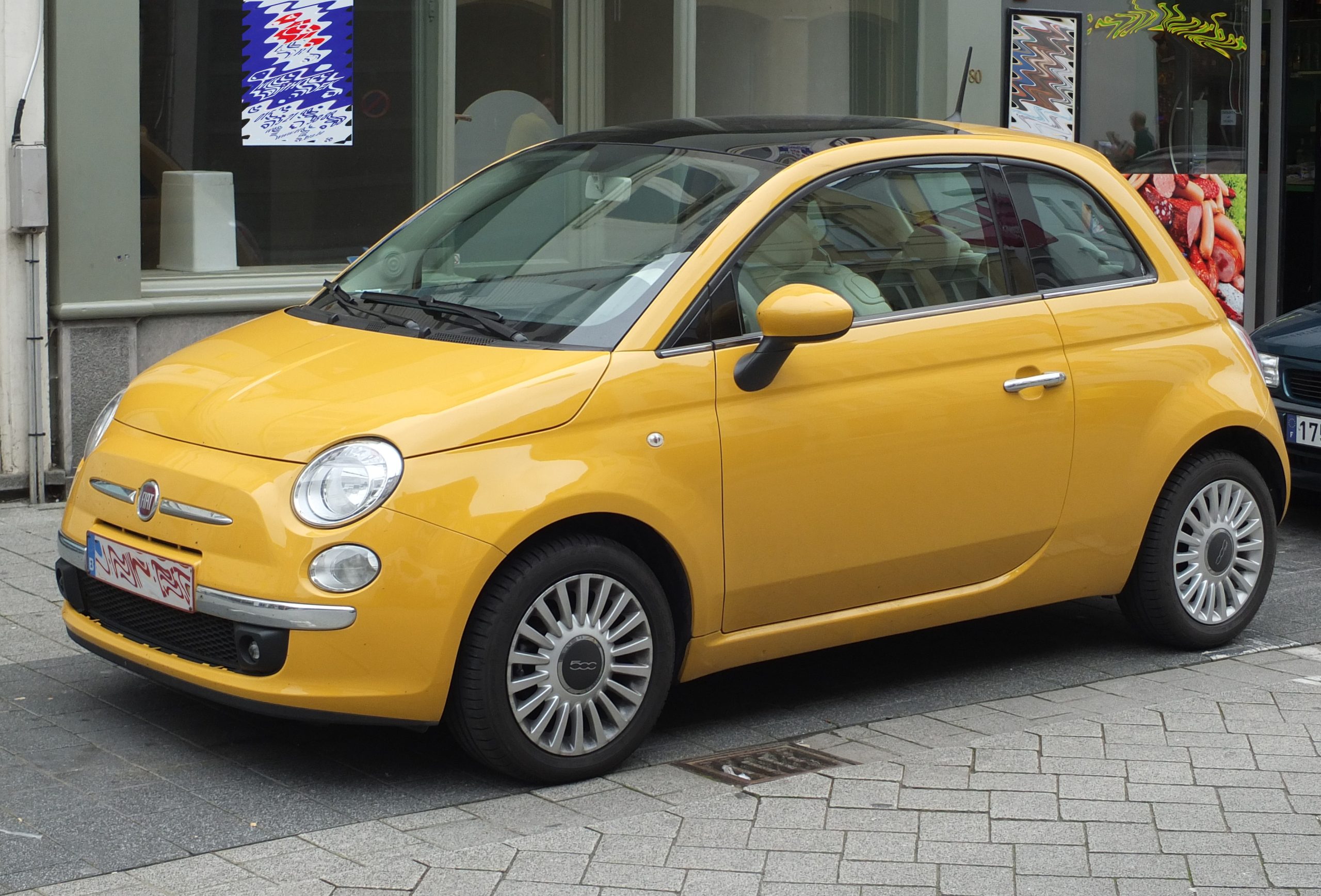
2. Fiat 500 (Early Models)
The Fiat 500 revival brought with it a wave of excitement and style when introduced to the U.S. market in the late 2000s and early 2010s. Its compact size, quirky personality, and European flair attracted urban buyers seeking something small and fun.
However, early Fiat 500 models now represent one of the most ignored cars in the used market. Despite their initial appeal, these cars suffer from a combination of poor reliability, cramped interiors, and underwhelming performance that keeps buyers away from the used listings.
One of the biggest drawbacks of the early Fiat 500 is its build quality. Many owners have reported frequent mechanical issues ranging from transmission failures to electrical gremlins, often leading to costly repairs that sour ownership experiences. Unlike Japanese or German competitors with solid reputations for durability, Fiat’s reliability scores were consistently low. This damaged the car’s long-term value, and as a result, many potential used buyers are reluctant to invest in a car that might become a money pit.
The 500’s tiny size, while perfect for city driving and tight parking spots, limits its practicality for many buyers. The rear seats are cramped, and cargo space is minimal, making it less appealing for those who need a versatile daily driver. For families or anyone needing to haul gear, the Fiat simply cannot compete with subcompact SUVs or even larger hatchbacks. Its small footprint may work in dense urban environments, but the trade-offs in comfort and utility push many buyers away.
Fuel economy, once a strong selling point, is also overshadowed by newer vehicles in the segment. While the Fiat 500 gets decent gas mileage, it doesn’t match the efficiency or refinement of modern hybrids or other small cars. Additionally, the car’s engine can feel underpowered, particularly on highways or when carrying multiple passengers. This performance gap further narrows the buyer pool, as many want a peppy, economical vehicle that won’t feel sluggish in everyday use.
Interior design and technology in early Fiat 500s also contribute to their lack of appeal. Although styled with retro charm, the materials used often feel cheap, and the infotainment systems are outdated compared to rivals. Buyers today expect seamless smartphone integration, intuitive controls, and a modern user experience—all areas where early Fiat models fall short. This technological lag makes the car feel dated and less desirable in a market flooded with well-equipped used options.
Fiat’s dealership and service network in the U.S. has historically been limited compared to other manufacturers, adding another layer of complexity for used car buyers. Access to parts and qualified technicians can be more difficult and expensive, further discouraging prospective owners. In a market where convenience and peace of mind are paramount, this logistical hurdle plays a big role in the Fiat 500’s low inquiry rates.
Finally, the overall perception of the Fiat 500 has shifted from cute city car to a “buyer beware” scenario in the used market. Many listings linger without offers, and sellers often resort to heavy discounts to move inventory. This dynamic creates a vicious cycle, as lower prices imply potential problems, which keep buyers cautious.
Without strong reliability or practicality, and facing fierce competition from more established players, the early Fiat 500 remains a car that struggles to find interested buyers on the used market.
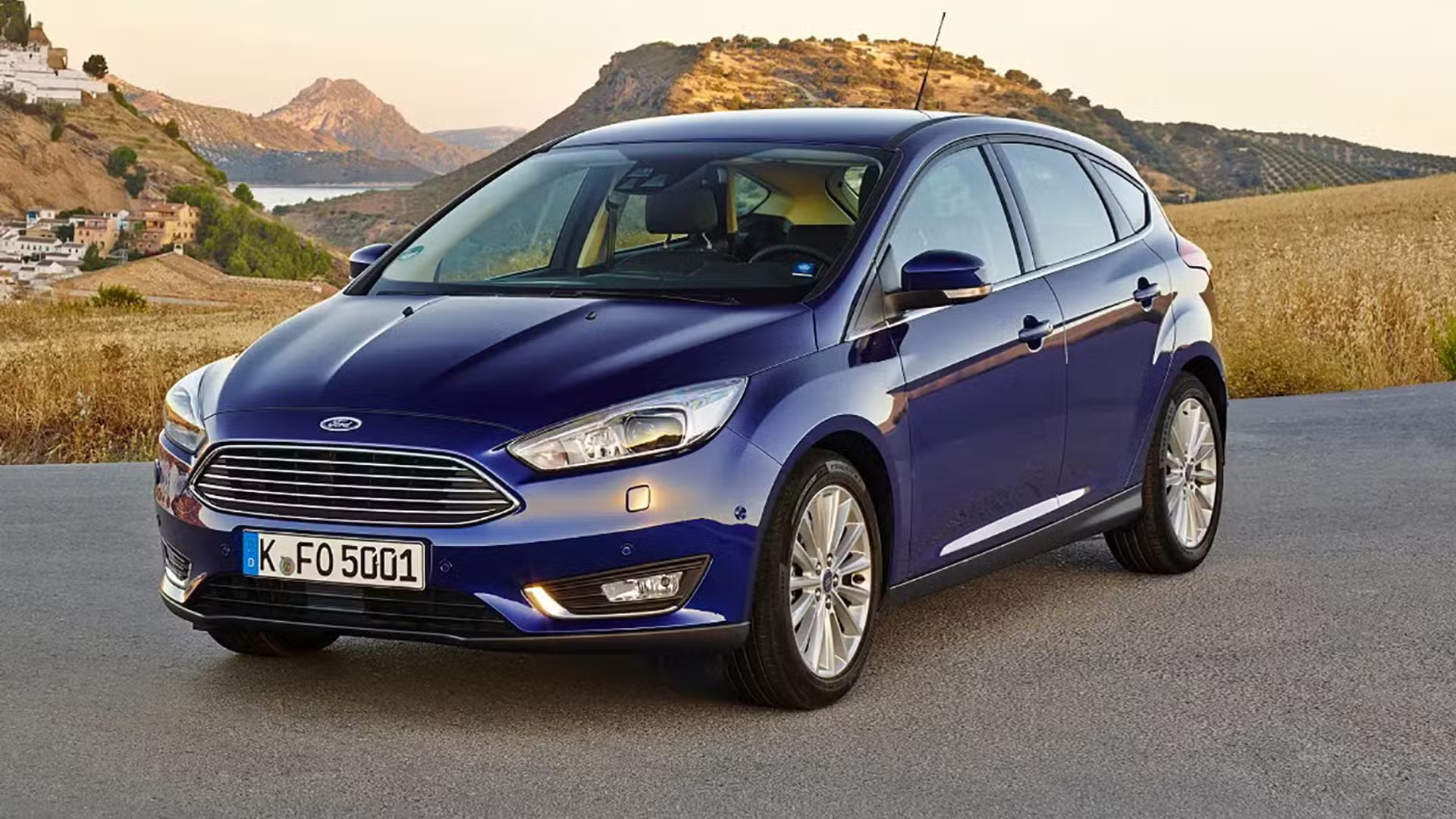
3. Ford Focus (Early Models)
The Ford Focus has been a staple of the compact car segment for decades, but the early models, particularly those from the mid-2000s, have earned a somewhat poor reputation in the used car market. While the Focus once represented an affordable and practical choice, many early iterations are now largely overlooked by buyers. Problems with build quality, engine reliability, and interior materials have caused these models to languish without inquiries, even at reduced prices.
One of the most persistent issues with early Focus models is their transmission reliability, particularly the dual-clutch automatic units introduced in later years. Many owners experienced jerky shifts, premature wear, and even complete transmission failures. This reputation has made prospective buyers wary of purchasing used Focuses with automatic transmissions, shrinking the buyer pool significantly. While manual versions fare better, they are far less common, limiting options for those looking to avoid these problems.
Additionally, early Focus models are often criticized for their below-average interior quality. Hard plastics, cheap trim pieces, and a somewhat dated design make the cabin feel less refined than competitors like the Honda Civic or Mazda3.
For buyers who prioritize comfort and aesthetics, the Focus simply doesn’t make the cut. This is especially true for younger buyers who are accustomed to higher-quality interiors in even economy vehicles today.
Engine performance in these early Focus cars is adequate but uninspiring. Base four-cylinder engines provide enough power for commuting but lack excitement or refinement. Furthermore, some models are plagued by issues such as coolant leaks, oil consumption, and occasional electrical faults. These reliability concerns lead buyers to choose other options in the compact segment, further reducing demand for used Focuses.
Practicality is another factor that works against the Focus. While it offers a reasonable amount of interior space and cargo capacity, it doesn’t stand out in any meaningful way. Other compact cars provide similar or better packaging with added benefits like superior fuel economy, better safety features, or more advanced technology. Without a compelling reason to choose it, many buyers overlook the Focus in favor of newer, more appealing vehicles.
Ford’s limited warranty support and dealer network for used Focus vehicles, compared to newer models, also play a role. Buyers looking for certified pre-owned programs or extended warranties may not find attractive options for older Focus cars. This lack of reassurance, combined with past reliability issues, deters cautious buyers, especially those unfamiliar with the model.
Lastly, the Ford Focus early models simply lack cultural cachet or enthusiast appeal. Unlike other cars that have loyal fan bases or desirable performance trims, these Focuses are seen as generic economy cars. They fail to generate excitement or emotional attachment, which are often critical drivers for used car purchases. As a result, they tend to sit on used car lots and online listings for extended periods, rarely sparking competitive bidding or waitlists.
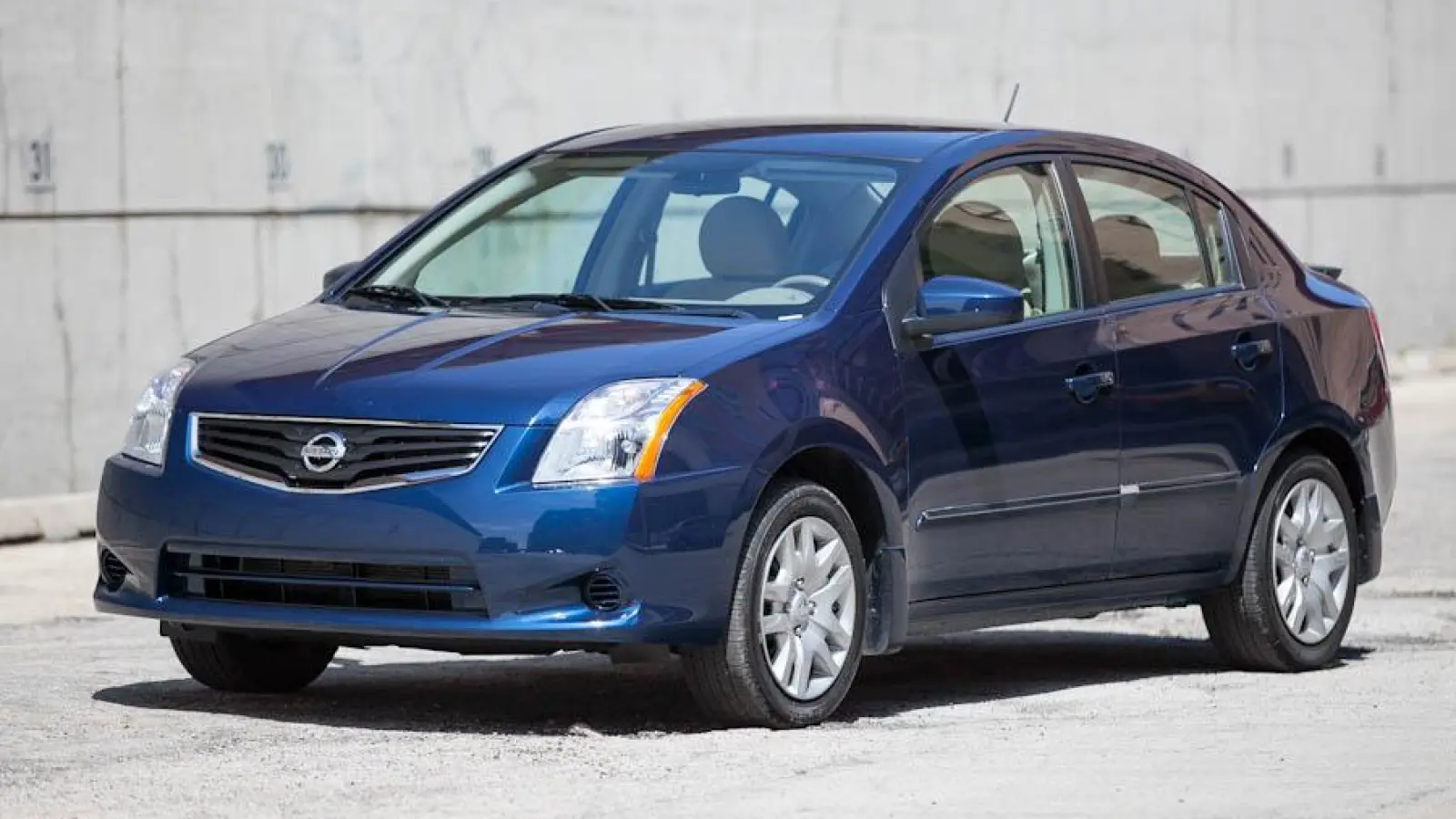
4. Nissan Sentra (Older Models)
The Nissan Sentra has long been an affordable, practical sedan choice for budget-conscious buyers, but older models—especially those from the late 1990s through early 2000s—are among the least sought-after vehicles on the used market today. While Sentras served as reliable transportation for many, these older cars are now often overlooked, forgotten, or sold for scrap value due to a combination of design, performance, and reliability issues.
One of the major factors driving low demand for older Sentras is their uninspiring styling and lack of modern features. Compared to contemporary compact sedans, these models look dated and offer minimal creature comforts. The cabin materials are often cheap and show wear quickly, making the car feel even older and less desirable. Buyers shopping for used cars today expect more modern aesthetics and amenities—even in budget segments—so these older Sentras struggle to compete.
Performance and handling in older Sentras are basic at best. Their small, low-powered four-cylinder engines are sufficient for city driving but lack any excitement or refinement. Moreover, the suspension and steering feel numb and unengaging. For buyers who value a comfortable ride or fun-to-drive characteristics, the Sentra falls short. This makes it especially unattractive compared to rivals like the Toyota Corolla or Honda Civic, which offer more balanced driving experiences.
Reliability is a mixed bag with these older Sentras. While some owners report decent longevity, many suffer from issues like premature timing chain wear, transmission troubles, and electrical glitches. Additionally, maintenance and parts availability for these older models have become more challenging as Nissan has shifted its focus to newer generations. Buyers often hesitate to purchase vehicles with known problem areas and potentially high repair costs, pushing Sentras down the desirability list.
Fuel economy, while reasonable, no longer stands out in a market where compact hybrids and efficient modern gas engines dominate. Buyers looking to save at the pump find better options elsewhere, and the Sentra’s aging powertrains do little to inspire confidence for long-term ownership costs.
Another reason for the Sentra’s lack of inquiry is the sheer volume of used examples available. These cars were produced in large numbers and sold widely, leading to significant market saturation. This oversupply, combined with low demand, results in prices so low that sellers often give up on finding a buyer, further depressing interest.
Lastly, the Sentra does not benefit from any enthusiast or cultural following. It’s seen as a basic, no-frills sedan with little character or unique appeal. Without brand prestige, performance pedigree, or style to attract buyers, older Sentras languish in used inventories, forgotten by most car shoppers who opt for more reliable, modern, or exciting alternatives.
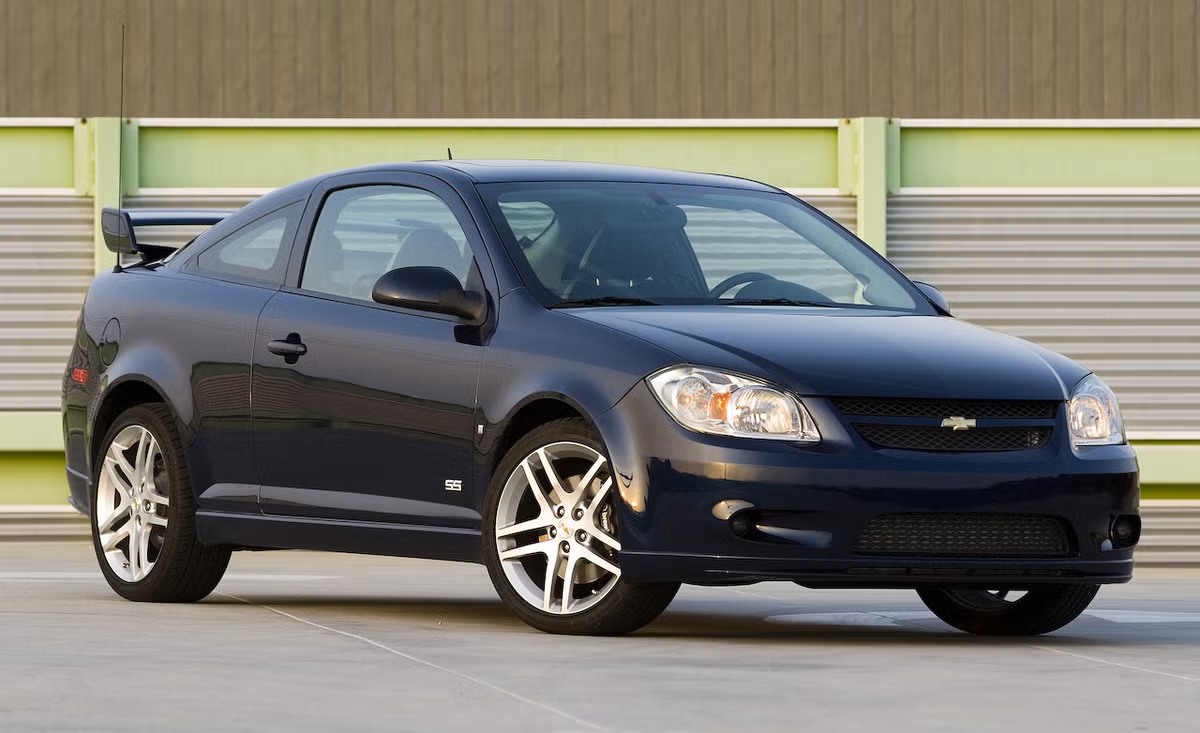
5. Chevrolet Cobalt
The Chevrolet Cobalt was introduced in the mid-2000s as a replacement for the Cavalier and positioned as an entry-level compact car. Despite Chevrolet’s efforts, the Cobalt never really captured the hearts or minds of buyers, especially when compared to segment leaders like the Honda Civic and Toyota Corolla. In the used market, Cobalts tend to linger without inquiries, often priced well below comparable vehicles, yet still failing to generate significant interest.
One key factor behind the Cobalt’s unpopularity is its troubled history with safety recalls and reliability issues. The model was plagued by ignition switch defects that led to numerous accidents and even fatalities. This defect became a major scandal and resulted in expensive recall campaigns.
Such a serious safety flaw severely damaged the Cobalt’s reputation and still haunts the model today. Buyers are understandably cautious about purchasing a vehicle with a history like this, even if the defects were addressed.
The design and build quality of the Cobalt are also limiting factors. The car was criticized for cheap interior materials, uninspired styling, and a lack of refinement. The cabin feels cramped compared to competitors, and the ride quality is mediocre at best. Buyers who want a compact car tend to gravitate toward vehicles with better interiors and more polished driving experiences, leaving the Cobalt out in the cold.
Performance and engine options are generally unremarkable. The base four-cylinder engines provide adequate power but no excitement. Additionally, some Cobalts were offered with a performance-oriented SS trim, but these versions never gained a strong enthusiast following. With better-performing sport compacts widely available, the Cobalt SS failed to capture attention or appreciation.
Reliability remains a concern as well. Many owners report frequent issues with electrical systems, cooling, and engine components. Combined with the vehicle’s tarnished safety record, these mechanical concerns contribute to low buyer confidence. For used buyers looking for dependable transportation, the Cobalt simply doesn’t check enough boxes.
Finally, the used market for the Cobalt is saturated with options, many of which have high mileage, accident history, or neglect. Because resale values are low, many sellers are forced to price aggressively but still struggle to move inventory. Without strong brand loyalty or distinctive attributes, the Chevrolet Cobalt sits unsold more often than not, exemplifying a vehicle that buyers largely avoid.
Also Read: 5 Cars That Alert Owners Instantly and 5 That Say Nothing Until It’s Too Late
The used car market is a dynamic and multifaceted arena where the old adage “one person’s trash is another person’s treasure” rarely holds straightforwardly. The reality is that some used cars, no matter their age or mileage, become treasures that prospective buyers eagerly wait to claim, while others struggle to find even a single interested party.
This contrast stems from a variety of factors that go beyond mere cost, encompassing the vehicle’s reliability, cultural significance, design appeal, and the emotional resonance it holds with buyers.
Throughout this exploration of five used cars with long buyer waitlists versus five that rarely get inquiries, it becomes clear that the most desirable used vehicles often share common threads. Legendary reliability, strong community support, and a reputation for durability and performance create a foundation that sustains demand over time.
Vehicles like the Toyota Tacoma and Subaru WRX illustrate how blending practicality with emotional appeal and a bit of performance flair can keep a car relevant and in high demand years after its release. These cars are not only transportation tools but symbols of lifestyle and identity, often fueling passionate followings that drive market dynamics.
In stark contrast, the less desirable vehicles, such as the Chrysler PT Cruiser and Chevrolet Cobalt, highlight the challenges of lasting appeal. Polarizing design, questionable build quality, poor reliability, and safety concerns weigh heavily on their reputations.
Even aggressive pricing often cannot compensate for the lack of buyer confidence or enthusiasm. These cars illustrate how negative perceptions can linger, deterring buyers and forcing sellers to drastically reduce prices or hold onto inventory indefinitely.
What emerges from this comparison is a deeper understanding of what truly matters in the used car market. While price and availability are important, they are not the sole determinants of desirability. Reliability remains king, but emotional connection and community also play significant roles.
Buyers want cars they can trust, yes—but they also want cars that excite them, reflect their personalities, or fit their lifestyles perfectly. These intangible qualities frequently tip the scales in favor of certain vehicles, creating the long waitlists that frustrate some buyers but delight sellers.
For consumers navigating the used car market, this knowledge is invaluable. It encourages a more discerning approach, recognizing that investing in a vehicle with a strong track record and passionate following can yield better ownership experiences and resale values. Meanwhile, it warns against falling for bargains that come with hidden costs or poor reputations. For sellers, understanding these nuances can improve pricing strategies and inventory choices, helping to align supply with actual demand.
Looking ahead, the used car market will continue to be shaped by evolving technologies, consumer preferences, and economic factors. Electric vehicles, hybrid models, and advanced driver-assistance systems will alter what buyers value, just as past innovations did. However, the lessons from the vehicles explored here remain relevant: a balance of reliability, style, and emotional appeal will always command attention.
Ultimately, the story of used car desirability is a tale of connection between drivers and their machines, past and present, and the ever-changing road ahead. Whether a vehicle ends up with a long buyer waitlist or is forgotten on a lot depends on how well it bridges that connection. Understanding these dynamics not only enriches our appreciation of cars but also empowers us to make smarter, more satisfying choices in the used car marketplace.

